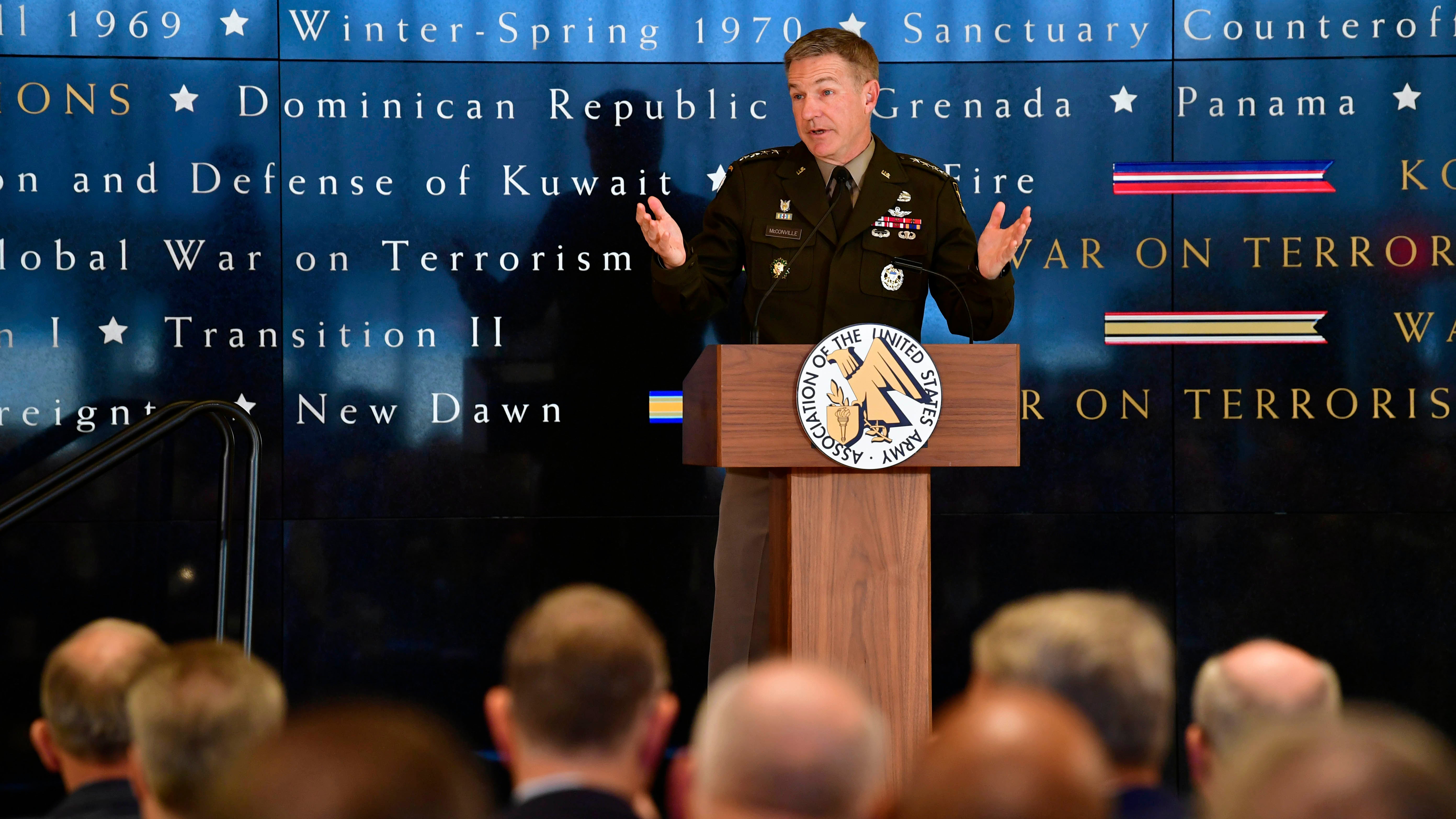Army Plans to Field 24 New Systems Next Year
Army Plans to Field 24 New Systems Next Year

The Army is preparing to field 24 of its 35 signature modernization systems in 2023, as it pushes ahead with its largest transformation effort in decades.
“Being ready today is not good enough,” Army Chief of Staff Gen. James McConville said March 8. “We must also make sure we’re ready tomorrow.”
More than four years ago, the Army established six modernization priorities, he said.
“Those priorities have not changed,” he said during an event hosted by the Association of the U.S. Army at the National Museum of the United States Army. “You have to set down priorities, you have to stay with them, and we’ve got to get these systems into the hands of soldiers.”
The 24 modernization systems scheduled for delivery in 2023 include long-range hypersonic missiles, medium-range missiles, the Precision Strike Missile, Mobile Protected Firepower, Army Integrated Air and Missile Defense, the Maneuver Short-Range Air Defense System, and the Next Generation Squad Weapon, he said.
The Army also remains committed to developing the Optionally Manned Fighting Vehicle, which is meant to replace the Bradley Fighting Vehicle, and the Future Attack Reconnaissance Aircraft and the Future Long-Range Assault Aircraft, McConville said.
“They’re not going to be fielded in ’23, they’re going to take a little more time than that, but that’s long-term modernization in the Army,” he said.
McConville thanked the Army’s industry partners for their work on the service’s modernization programs. “Many of you have been investing in these programs as we go along, and I think you’ve done a very good job of getting these systems in place,” he said.
Looking ahead, the Army also must look for new ways to counter unmanned aerial systems, McConville said.
“I believe that’s today’s IED,” he said. “From violent extremists to great powers, everyone is using unmanned aerial systems. That’s something we have to aggressively get after and make happen.”
The Army must “keep up the momentum” in its modernization programs, McConville said.
“The programs we have, they have to stay on schedule, they have to stay at cost, and they have to stay at performance, and they have to get delivered,” he said.
Work on new, leap-ahead capabilities is critical as the Army remains in high demand, McConville said.
The 82nd Airborne Division alone has been called up with little to no notice four times in the past three years, he said, for missions ranging from securing the U.S. Embassy in Baghdad to helping evacuate U.S. citizens from Afghanistan.
“We don’t get to decide when it’s time to go, we don’t get to choose our mission,” McConville said.
As Army leaders wrestle with uncertain budgets and growing demands, “we’re going to build the best Army we can with the resources we get,” McConville said.
“We know [that] when it’s time to go, we’re going to go with the Army we have,” he said, “and the Army we have is the greatest fighting force in the world, and we’re going to keep it that way.”

